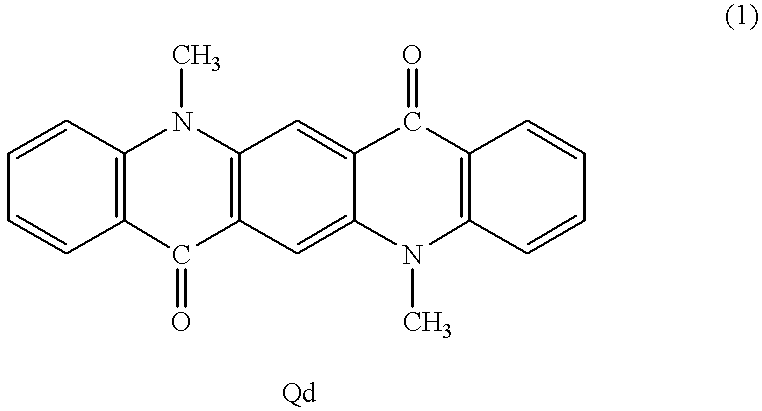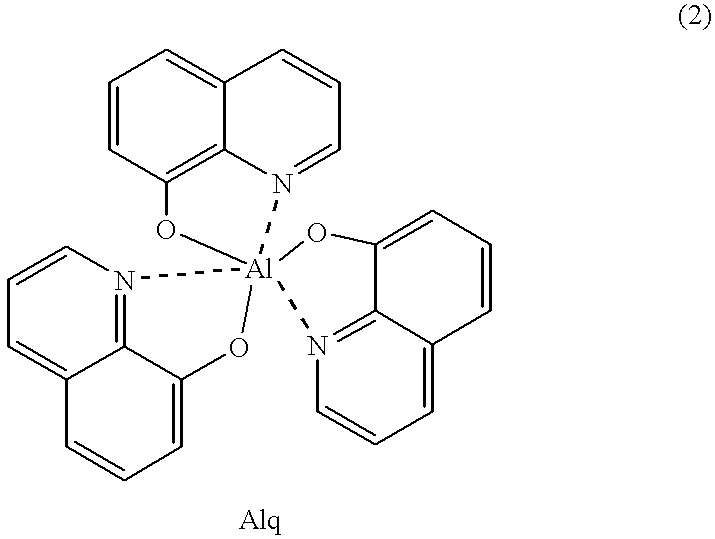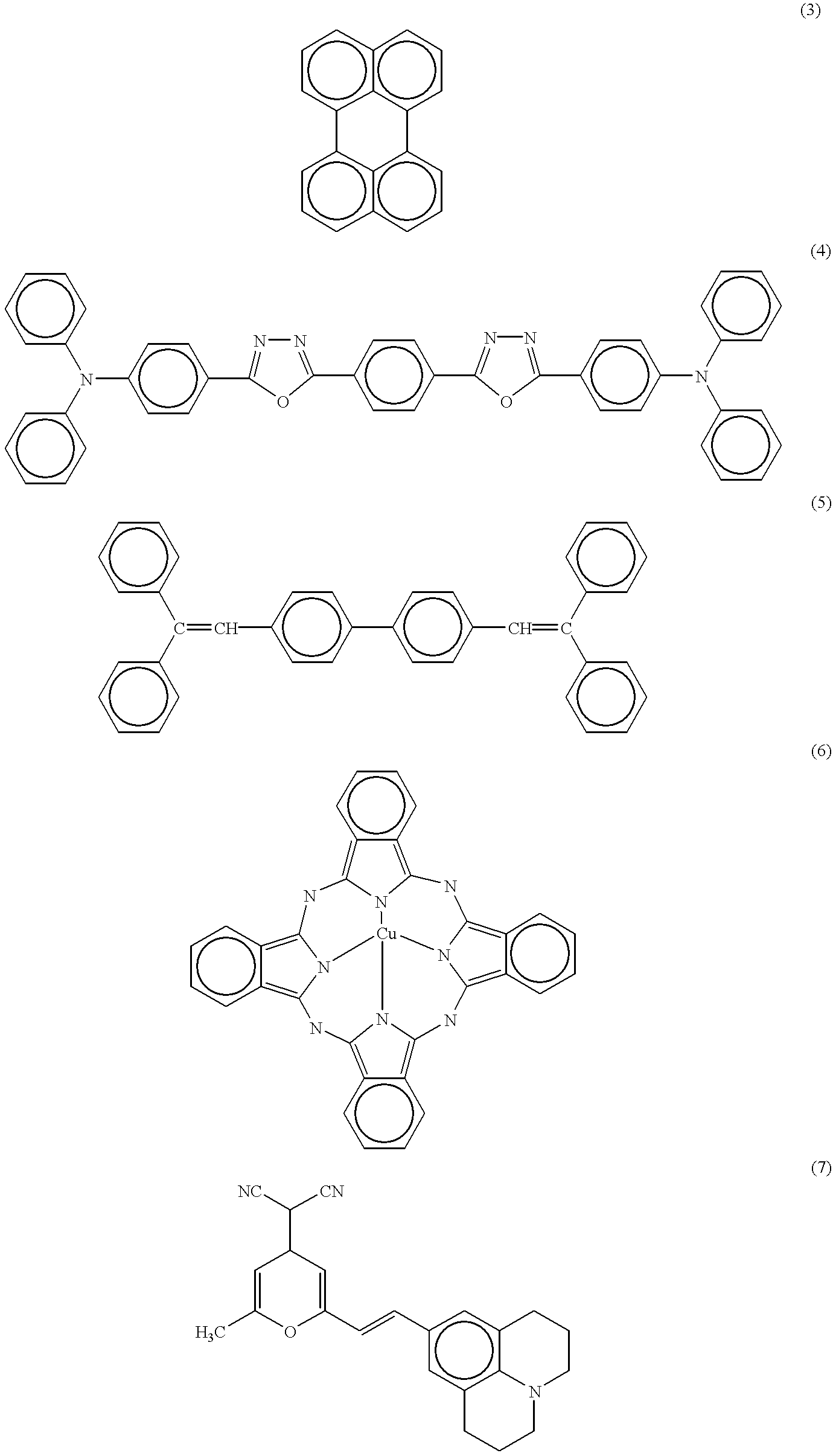Optical resonator type organic electroluminescent element
a luminescent element and optical resonator technology, applied in the direction of discharge tube luminescence screen, natural mineral layered products, transportation and packaging, etc., can solve the problems of inability to prevent the generation of joule heat, the inability to achieve directivity of luminescence light, and the inability to avoid heat generation in the ito electrod
- Summary
- Abstract
- Description
- Claims
- Application Information
AI Technical Summary
Benefits of technology
Problems solved by technology
Method used
Image
Examples
Embodiment Construction
FIG. 11 shows an example of the organic EL element of the present invention. In the organic EL element shown in FIG. 11, the multilayered film mirror was first formed on a cleaned glass substrate by alternately forming the SiO.sub.2 film and the TiO.sub.2 film each having a different refractive index (alternately four layers each to form eight layers in total) by a magnetron sputtering method. Here, a stop band (optical reflected wavelength area of the multilayered film i1h mirror) was set to a center wavelength of 570 nm, and the SiO.sub.2 film and the TiO.sub.2 film were set to a thickness of 97 nm and 60 nm respectively. The multilayered film mirror obtained as described above had a reflectivity of about 90%.
Next, the ITO electrode was formed to a thickness of .lambda. / 2 (film thickness 150 nm) as an anode electrode on the multilayered film mirror. Triphenylamine tetramer (TPTE) was then formed to a thickness of 60 nm as the electron hole transportation layer by a vacuum evaporat...
PUM
| Property | Measurement | Unit |
|---|---|---|
| Length | aaaaa | aaaaa |
| Length | aaaaa | aaaaa |
| Thickness | aaaaa | aaaaa |
Abstract
Description
Claims
Application Information
 Login to View More
Login to View More - R&D
- Intellectual Property
- Life Sciences
- Materials
- Tech Scout
- Unparalleled Data Quality
- Higher Quality Content
- 60% Fewer Hallucinations
Browse by: Latest US Patents, China's latest patents, Technical Efficacy Thesaurus, Application Domain, Technology Topic, Popular Technical Reports.
© 2025 PatSnap. All rights reserved.Legal|Privacy policy|Modern Slavery Act Transparency Statement|Sitemap|About US| Contact US: help@patsnap.com



